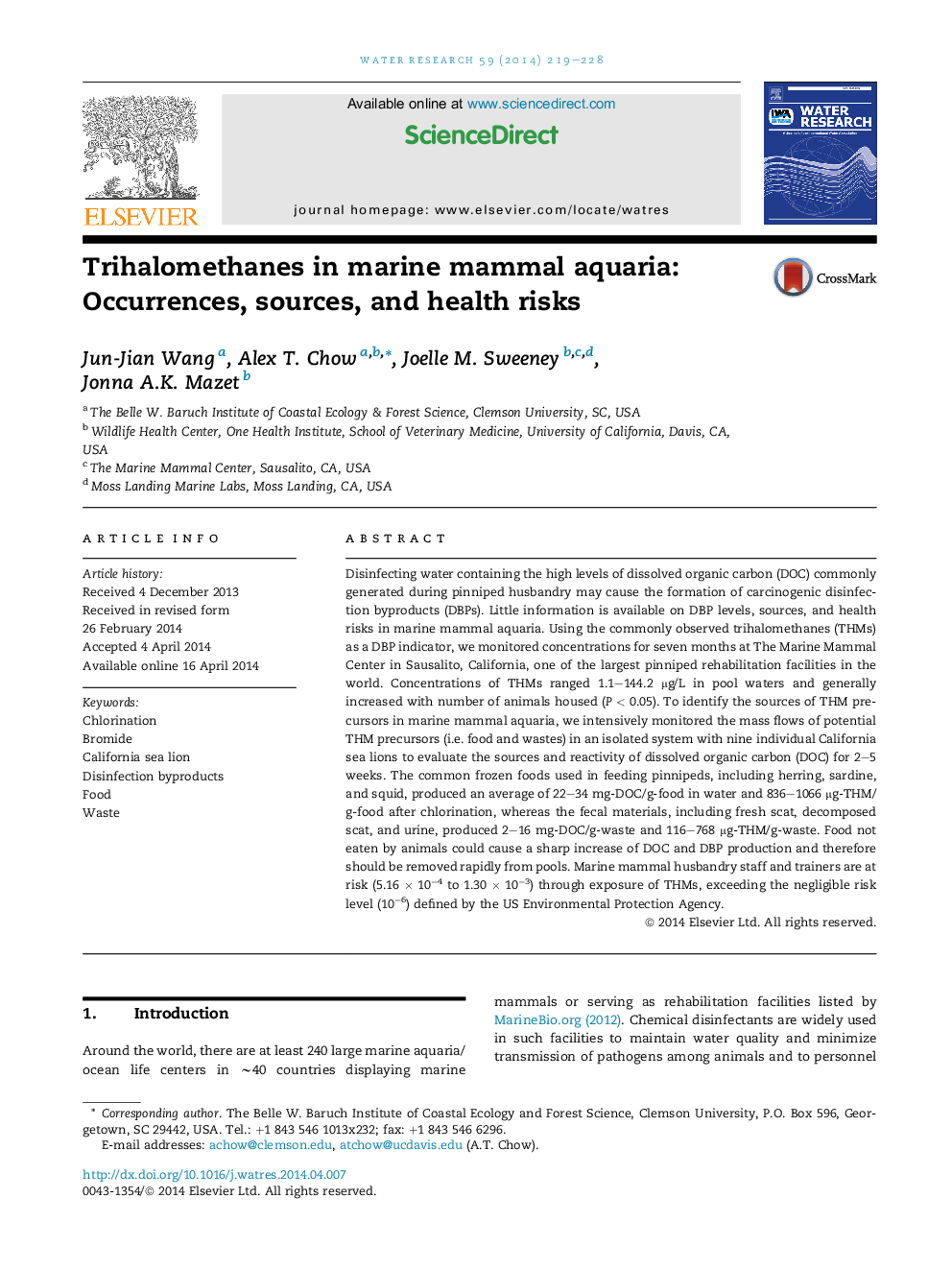| کد مقاله | کد نشریه | سال انتشار | مقاله انگلیسی | نسخه تمام متن |
|---|---|---|---|---|
| 4481541 | 1623109 | 2014 | 10 صفحه PDF | دانلود رایگان |

• Trihalomethanes (THMs) in marine mammal aquaria correlated to number of animals.
• Uneaten food (higher THM formation potential) and animal wastes are THM precursors.
• Here ultraviolet absorption at 254 nm is not a reliable indicator for THM formation.
• Trainers have a high risk from inhalation exposure of THM (5.16 × 10−4–1.30 × 10−3).
Disinfecting water containing the high levels of dissolved organic carbon (DOC) commonly generated during pinniped husbandry may cause the formation of carcinogenic disinfection byproducts (DBPs). Little information is available on DBP levels, sources, and health risks in marine mammal aquaria. Using the commonly observed trihalomethanes (THMs) as a DBP indicator, we monitored concentrations for seven months at The Marine Mammal Center in Sausalito, California, one of the largest pinniped rehabilitation facilities in the world. Concentrations of THMs ranged 1.1–144.2 μg/L in pool waters and generally increased with number of animals housed (P < 0.05). To identify the sources of THM precursors in marine mammal aquaria, we intensively monitored the mass flows of potential THM precursors (i.e. food and wastes) in an isolated system with nine individual California sea lions to evaluate the sources and reactivity of dissolved organic carbon (DOC) for 2–5 weeks. The common frozen foods used in feeding pinnipeds, including herring, sardine, and squid, produced an average of 22–34 mg-DOC/g-food in water and 836–1066 μg-THM/g-food after chlorination, whereas the fecal materials, including fresh scat, decomposed scat, and urine, produced 2–16 mg-DOC/g-waste and 116–768 μg-THM/g-waste. Food not eaten by animals could cause a sharp increase of DOC and DBP production and therefore should be removed rapidly from pools. Marine mammal husbandry staff and trainers are at risk (5.16 × 10−4 to 1.30 × 10−3) through exposure of THMs, exceeding the negligible risk level (10−6) defined by the US Environmental Protection Agency.
Figure optionsDownload high-quality image (199 K)Download as PowerPoint slide
Journal: Water Research - Volume 59, 1 August 2014, Pages 219–228